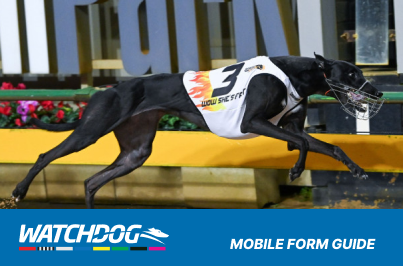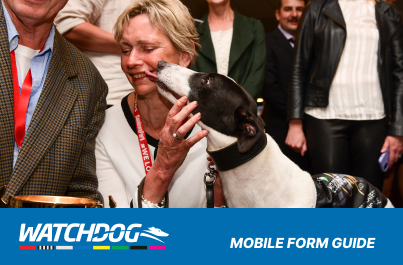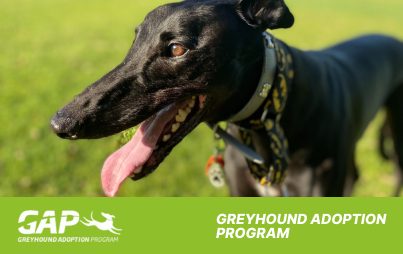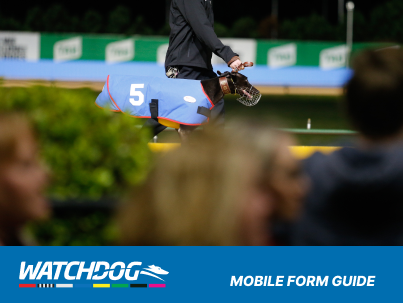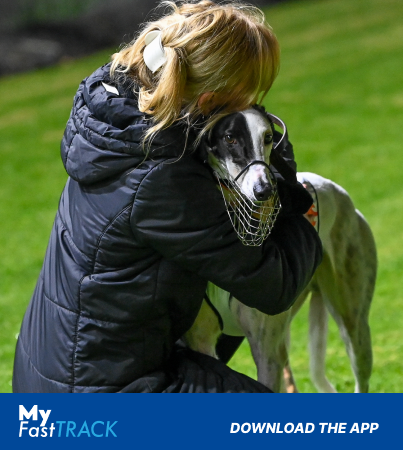Successful Rearing And Associated Costs
Every aspect of a greyhound pup’s upbringing is detrimental to their hopes of making it to the racetrack, and perhaps none more so than the rearing phase.
The rearing phase starts at around three months of age up until about 14 months old, which is an ideal time for breaking in.
At three months greyhound pups receive their first vaccination, and this is around the age where they can be moved from indoors with their mum into a small paddock or run with pups of the same age (usually their littermates).
In these ultra competitive times, there are four vital components that must be incorporated into your greyhound’s rearing experience in order for it to have a chance at future racetrack success.
1. A nutritious diet. There is no one set menu that is necessarily superior to the others, although fresh meat suitable for human consumption, quality dry food (kibble) and fresh milk and water are essential.
CAUTION: Be mindful that some people may say they feed their pups a certain diet, but that may no necessarily be the case. If you can own a greyhound in partnership with the person rearing your greyhound (for instance the breeder) your chances of success are dramatically increased.
2. Free-range galloping. Regular access to an open paddock at least an acre in size is critically important in order for your greyhound to learn to twist and turn and manoeuvre as they have to in racing conditions. Rearing greyhounds in long runs is ok, as they can still get a lot of galloping this way, however the modern-day rearer gives their greyhound access to large paddocks at least every second day which gives them a distinct advantage.
CAUTION: Some rearers may rear their pups in galloping runs and tell you they are regularly letting your greyhound into a larger paddock, but it’s tough to know if this is actually happening. Choosing a successful modern-day rearer will help alleviate this concern, particularly if they are a part-owner in your pup. Be mindful that greyhounds can also do too much galloping, which can cause excess stress on their bones and joints. If a greyhound pup is injured it is imperative to keep it in a small area separate from other dogs so it cannot injure itself further. It is also strongly advisable to take it to a greyhound vet for assessment.
3. Socialising. As important as it is that greyhounds have access to a large paddock, it is just as important that they do so while in the company of greyhounds their own age. The company keeps them happy, triggers their competitive nature and allows them to adapt to the type of hustle and bustle they will face in competitive racing.
CAUTION: Rearers need to be mindful that, like people, not all greyhounds get along, particularly in situations where food is involved. Pups need to be monitored, particularly during meal times, as they can attack each other and cause serious injuries. If a greyhound pup is injured it is imperative to keep it in a small area separate from other dogs so it cannot injure itself further. It is also strongly advisable to take it to a greyhound vet for assessment.
4. Human interaction. Regular human interaction builds the confidence of a greyhound, and this should happen on a daily basis from a very young age. Things like throwing a tennis ball for them to chase will help with their confidence levels around people. Kennelling them for a couple of weeks prior to break-in can also be hugely beneficial, as it means that when they go to the breakers, a place where they spend most of their time being kennelled, it won’t be such a shock to the system and they are more likely to break-in in less time and to the best of their ability. Getting them used to walking on a lead during the rearing phase can also be a huge advantage as they will need to do this when they are at the breakers.
CAUTION: Without regular human interaction a greyhound pup will lack the confidence to perform to their ability, particularly if they are sent away to a professional breaker to be broken-in.
THE COST OF REARING
You can expect to pay a minimum of $50 per week during the rearing phase, however what a rearer charges doesn’t necessarily reflect the quality of job they are doing or the quality of food they are feeding. Using an established rearer is always an advantage, but keep in mind that someone who reared champions of yesteryear may no longer have the facilities or capabilities of the successful modern-day rearer, and that comes down to meeting the four key criteria mentioned above. The more you can visit your pup during the rearing phase the better, as you can give it plenty of handling and even teach it to walk on a lead, but your pup’s chances of success on the racetrack ultimately lie with the rearer.
GRV WEBSITES
GRV WEBSITES
Quicklinks
Report misconduct or suspicious activity
Call Investigations Hotline 24 hours a day - 7 days a week
